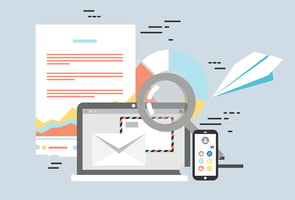El marketing technology (MarTech) ha dejado de ser un conjunto de herramientas aisladas para...
The Future MarTech Stack: Integrating AI, Data, and Creativity to Maximize ROI
Marketing technology (MarTech) is no longer a set of isolated tools but has become an ecosystem where AI, data, and creativity must work together to generate real performance. In 2025, martech budgets are growing, but many companies are not making the most of their technology stacks. Integrating these pieces well is what separates the leader from the follower.
- A recent report (“State of Martech 2025”) found that 72% of companies have already piloted or integrated AI into specific marketing flows.
- However, another study shows that only ~14% of marketers report using their MarTech stack to its full potential.
Essential components of a modern MarTech Stack
1. Robust data infrastructure and governance
- CDPs, data warehouses, lakes, clean pipelines.
- Data quality, privacy, and security policies.
2. AI/machine learning layer
- Predictive segmentation, scoring, recommendations, content generation (text, images, video).
- Adaptive models, continuous learning.
3. Automation and orchestration
- Multichannel workflows, automated campaigns, personalized customer journeys.
- Tools that enable real-time triggers.
4. AI-assisted creativity
- Copy generation, images, visual designs.
- Creative personalization — adapt style, tone, message according to segment.
5. Advanced analytics & ROI measurement
- Advanced attribution, real-time dashboards, conversion metrics, retention, lifetime value.
- Feedback loops where results feed back into model and creativity improvement.
How to successfully integrate these three pillars (AI + Data + Creativity)
- Have interdisciplinary teams: data scientists, creative marketers, engineers; break down barriers between data and creativity.
- Design user experiences that use creativity but support data-driven decisions: A/B testing, dynamic personalization, adaptive content.
- Use AI not as a replacement for creativity, but as a catalyst: quick ideas, generation of variants, but with human review.
- Ensure interoperability of tools: data systems feed AI, creative outputs can be triggered automatically, everything is measured.
KPIs and metrics for measuring ROI
|
Metric |
What it measures |
Why it matters |
|
CAC vs LTV |
Customer acquisition cost vs. customer lifetime value |
To ensure that acquired customers generate sustainable value |
|
Conversion Rate |
Percentage of visitors/leads that convert |
Reflects the effectiveness of the funnel and personalization |
|
Sales Cycle Length |
Time from initial contact to closing |
AI can shorten it through prioritization and automation |
|
Retention and churn |
How well are customers retained? |
Acquisition costs are high, but retention is profitable. |
|
Incremental ROI of AI initiatives |
Compare scenarios with and without AI |
To justify future investments |
Use cases/examples
- Popular tools such as CDPs and AI marketing platforms are used to personalize emails, predict cart abandonment, segment audiences, etc. (Reports show AI use for content, segmentation, email/SMS personalization)
- A case study from SuperAGI: companies that adopt AI-powered CRMs saw improvements in conversion rates, reduced sales cycles, and increased sales productivity.
Challenges and how to overcome them
- Tool sprawl: too many tools without integration ≠ more value. Prioritize integration, consolidate functions.
- Lack of internal skills: creativity and data require collaboration or cross-training.
- Measuring results: if you don't set clear KPIs, it's difficult to demonstrate ROI.
- Privacy & ethics in data use: maintain transparency, clear policies, consent.
A well-designed MarTech stack that integrates clean data, functional artificial intelligence, and human creativity can exponentially maximize ROI. It's not enough to invest in tools; the key is integration, governance, and constant experimentation.



